|
This short article is dedicated to the mentors of social entrepreneurs who are the target group for the i2SustainIT project that we are realizing together with our partners.
The relationships between social entrepreneurs and their mentors are usually dynamic, personal, and fluid and the decision of an entrepreneur to have a mentor is usually a challenge. Mentors should suit the needs of social entrepreneurs and often must be changed over time. The entrepreneurs can have multiple mentors, a network that they can rely on for different things at different times. Each mentor brings with them a unique perspective, skillset, and history of experiences that the entrepreneur can leverage. We have found during the Impact Investment for Nurturing Sustainability project that “if we create proper support and some additional tools that enhance design thinking skills, abilities, and knowledge of the mentors of social entrepreneurs (facilitators, consultants, trainers, coaches, and investors), then the social enterprises will be able to achieve better impact on their target groups and on solving social challenges”. The design thinking integration into the mentoring process of social entrepreneurs can significantly contribute to one idea for social impact, go to a design of a technical solution and then successfully go to the market. This approach emphasizes the rapid prototyping of a solution for quick feedback and reviews whether to continue with the development or alter specific elements to adjust to what actually needs to be addressed. As Tim Brown from IDEO has defined, „design thinking is a human-centered approach to innovation”. For mentors design thinking is a mentee-centered, creative, and collaborative problem-solving methodology that they can use whilst working with the mentees (social entrepreneurs). It requires a set of attitudes and a way of thinking about the mentors’ own participation in the problem-solving process during peer-to-peer with the mentees. Design thinking for the mentors is an iterative process in which they seek to:
It is also an attempt of the mentors to identify alternative strategies and solutions that might not be instantly apparent with the initial level of understanding of the challenge assumptions the social entrepreneur had in mind. Thus, design thinking is a way of thinking and working as well as a collection of hands-on methods which the mentors have to know and to use in their work. Another finding is that design thinking is an expansive and iterative process. A good mentor should resist the temptation to jump immediately to a solution to the stated social problem as it is proposed by the social entrepreneur. Instead, the mentor first needs to pay attention and spend time determining what the fundamental issue that needs to be addressed is. The mentors' design thinking rule has to be that they don't try to search for a solution until the real problem is determined, and even then, instead of solving that problem, the mentors should try to consider a wider range of potential solutions and share them with the social entrepreneurs. Only then the mentors would validate the proposal of the entrepreneurs as reasonable. Key areas of expertise when mentors of social entrepreneurs perform whilst working with them are as follows:
As the mentors usually work individually with the entrepreneurs like coaches, they need to play all these three roles throughout the process. The mentor usually asks the entrepreneur to check the gathered information at the beginning of the process, to see the visualized ideas and to properly evaluate them, and to understand what solution the entrepreneur came up with to fix the problem. A problem might require many different types of expertise to solve, and many iterations to target the best solution. The mentor, that practices the design thinking approach, is more powerful when he/she has a highly diverse set of perspectives and areas of expertise. Design thinking requires the mentor to understand social entrepreneurs’ researches, to uncover the real needs and desires of the targeted market. In the peer work with the social entrepreneur, the mentor who uses the design thinking approach is focused on the social challenges and the needs of the target groups in general and in particular, on the understanding of the social entrepreneur for them. Then, grounded in research and fueled by creativity, the mentor and entrepreneur together come up with ideas, would create models of those ideas, and test those ideas in a cycle of iteration that moves toward a solution. 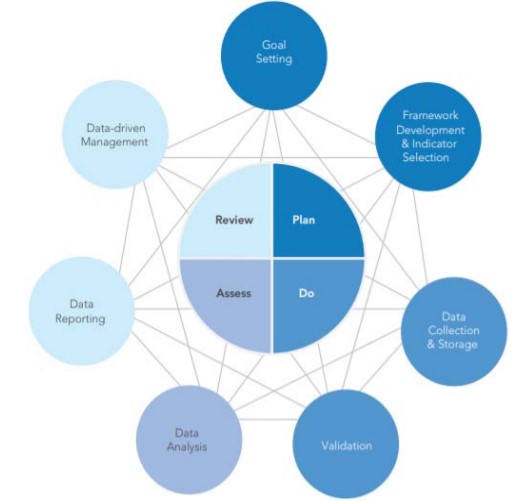 d The Group of Eight (G8) refers to the group of eight highly industrialized nations--France, Germany, Italy, the United Kingdom, Japan, the United States, Canada, and Russia—that hold an annual meeting-summit lasts for two days- to foster consensus on global issues like economic growth and crisis management, global security, energy, and terrorism. The Working Group Under the direction of the Social Impact Investment Taskforce, the Impact Measurement Working Group was established, consisting of 24 impact investing and measurement practitioners. Those who wish to implement impact measurement today face a variety of challenges. In light of this, the Working Group has identified four broad phases of impact measurement: Plan, Do, Assess and Review. Along with insight into the impact that an activity is generating, this process generates intelligence that can further enhance the measurement and investment processes. In addition, the Working Group has identified seven widely accepted activity guidelines that underlie the four phases of impact measurement. These seven guidelines provide participants with a blueprint for the effective definition, collection and analysis of impact data. As the G8’s Social Impact Investment Taskforce put it: “The better we get at measuring impact, the more money will flow into impact investment” (2014). These guidelines and related actions are dynamic. Performance measurement processes and the outputs of each step will interact and evolve continuously. The sequence, frequency, and timing of each activity will also vary. Implementation of these guidelines will be unique to every organization, as they are likely to have their own measurement goals, resource constraints, and stakeholders to consider. Nonetheless, these guidelines form a good foundation for any impact measurement framework Do you want to know more about this? Click the button and download our free Impact Measurement Guidelines. Author
Partners @i2 SustainIT The workshop, which will take place on 15.11.2021 in Brussels with the hosts Creative District, a partner organisation for the i2 SustainIT project, is approaching. This short article is dedicated to the topic that will be discussed by over 30 participants in this workshop (social entrepreneurs, mentors and investors), namely what is good for investors to know when investing in social enterprises. In general, and easily, the answer to this question sounds like this - to achieve positive impact on society and at the same time to make a profit from the money invested. But is profit only measured in money? How and why measuring the results of an investment is so important. Whether it is true for investors, that represents the motto of the social entrepreneurs themselves "Do business for good" or maybe “Invest for impact”? Answers to these questions one can find in the outputs of the project i2 SustainIT. All of us know that data has become an integral component of every kind of investment decisions, and impact investing is no exception. It’s impossible to know whether an investment is effectively delivering impact without measuring and recording its progress. The investors need reliable, standardized data. They use this information to make decisions about specific investments as well as to inform their overall strategy, with the goal of feeling confident that they’re realizing the greatest possible impact with their capital. From a bigger-picture perspective, impact measurement paired with thoughtful reporting builds industry knowledge of what works and what doesn’t. In turn, well-designed reporting illustrates the progress made toward tangible outcomes and helps raise the industry’s profile. The Global Impact Investing Network (GIIN) defines impact investments as investments made with the intention to generate positive, measurable social and environmental impact alongside a financial return. Impact investments can be made in both emerging and developed markets, and target a range of returns, depending on investors' strategic goals. Measurement of impact is central to impact investment. As the G8’s Social Impact Investment Taskforce put it: “The better we get at measuring impact, the more money will flow into impact investment” (2014). What is Impact Measurement?This term includes these activities that investors undertake in order to evaluate and report on the financial and social change generated by an investment. Impact measurement is one of the defining characteristics of impact investing, as it demonstrates the commitment of investors to the social and environmental progress of their investments. It also allows them to feed the knowledge gained back into the business to fuel data-driven decision-making. Success as defined in a traditional business can be easily gauged using established and readily understood financial measures. In comparison, the impact performance is more difficult to identify, quantify and measure. A hallmark of impact investing is the commitment of the investor to measure and report the social and environmental performance and progress of underlying investments, ensuring transparency and accountability while informing the practice of impact investing and building the field. The Investors’ approaches to impact measurement will vary based on their objectives and capacities, and the choice of what to measure usually reflects investor goals and, consequently, investor intention. In general, the components of impact measurement best practices for impact investing include the following:
Why Measure Impact?Perhaps the most obvious reason for measuring impact is to understand the social or environmental outcomes of an investment after it has been made. However, analysts have highlighted a range of reasons for measurement, and this measurement helps guide the decision-making process at various stages of the investment.
For instance, So & Staskevicius (2015) highlight four key objectives of measurement in their analysis of 20 impact investors’ practices:
Thus, as well as providing accountability to investors and increasing investor confidence in an investment, effective measurement helps investors choose investments (by picking firms with the best environmental track record, for example) and helps explain reasons behind an investment’s success, or flop, in creating impact. 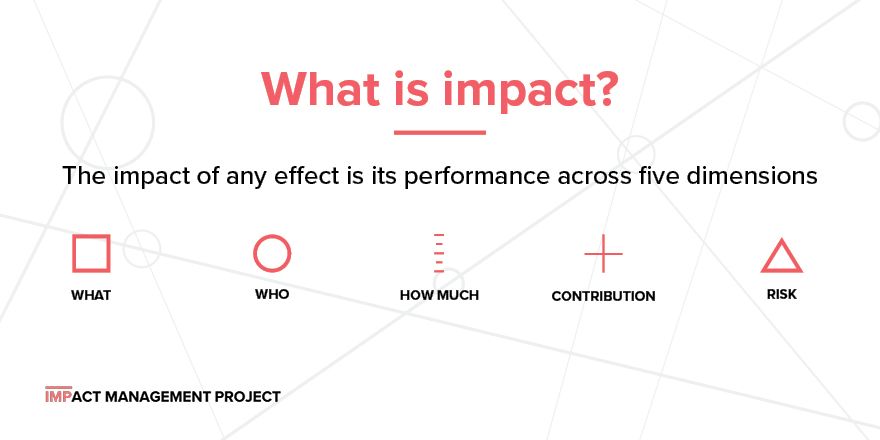 Innovative business models are created and investors are realising that the impacts of their activities, on stakeholders, and on society, the environment and the economy, in general, are critical. This has captured the attention of leaders in all sectors seeking innovative ways to help solve some of society’s most pressing issues through impact investment. Impact measurement is central to the practice of impact investing and vital to the growth of the impact investing market. Effective impact measurement generates value for all impact investment stakeholders, mobilizes greater capital, and increases the transparency and accountability for the impact delivered. Since 2016, The Impact Management Project ( IMP) has convened a community of practitioners comprised of more than 2,000 companies and investors to create a global consensus on how to talk about, measure and manage our ESG risks and positive impacts. Thus the IMP defines impact as a change in an outcome caused by an organisation. In order to understand and measure any impact, the Project introduces the five dimensions of performance. 5 dimensions of performance:
In our Output1, Impact Measurement Guidelines [IMGuide], we propose a series of different frameworks to measure impact, if you want more information do not hesitate to visit it. Author Partners @i2 SustainIT  A social entrepreneur is defined as a leader or pragmatic visionary who can use the entrepreneurial principles to create:
As a way to achieve social impact the typical social entrepreneur usually creates social enterprise. A social enterprise is an operator whose main objective is to have a social impact rather than make a profit for its owners or shareholders. It usually shares the following characteristics:
Author Partners @i2 SustainIT Just as any business has to niche their market, social entrepreneurs must niche their impact. While the UN Sustainable Development Goals are a great framework for thinking about development, not many social enterprises can “wipe out global poverty.” Mentoring for Impact A lack of focus on specific, achievable impact goals can dilute the effectiveness of the entrepreneurs. Thus, the principles of social impact, that the mentor should follow are:
Mentoring for Leadership If you hope to scale your impact, and therefore your business, at some point you have to multiply your efforts by leading others. Then, communicating, coaching, creating culture and the following key skills start to take precedence over technical know-how.
Mentoring for growth, strategy and innovation A social business is, in the end, a business. Businesses survive and thrive from sustainable, profitable growth. This can be achieved by strategies for innovative and sustainable business models and revenue streams. Some nonprofits are doing well and doing good. And yet, they must grow a sustainable source of funding to create an impact. So, in a sense, money and mission are never totally detached. Author Partners @i2 SustainIT You could be a mentor to social entrepreneurs without behaving like a design thinker, but our finding is that in this case your results and the impact that social entrepreneurs can have as a result of your support will be worse than with this if you had a behaviour of design thinker. What we have found from our peer work as mentors with social entrepreneurs is that to behave as a design thinker the mentor should be driven at least by the following basic prerequisites: a) understanding the mentee (social entrepreneur) as a creative person who falls in love with the social problem and tries to solve it at whatever price. This principle starts with empathy and focuses on own study in order to he/she to understand the social entrepreneur and its target groups. b) creating an open, playful atmosphere that will fuel the creativity of the entrepreneur. It allows the mentor to frame the problem in a new way, look at it from different perspectives and consider a variety of solutions and provoke entrepreneurs toward creativeness. c) keeping the mind of the entrepreneur open that testing the social solution is a must and its potential reframing is a regular result. Early rounds of testing and feedback help ensure the entrepreneur is delivering solutions that the target group will love. d) collaborating with the entrepreneur although they may have diverse perspectives on the social solution or impact. They have to work together, creating a team that encourage different viewpoints and stimulates the co-creation process. This principle is very important and we call it a peer-to-peer working process. Author Partners @i2 SustainIT There are five key elements of the design thinking process that mentors can exploit for high impact. Where and how they can help.  1. Human-centered. This principle starts with empathy and focuses on research to really understand people-clients, customers and users. 2. Creative and playful. The mentors have to create an open, playful atmosphere. It is critical to fuelling creativity. It allows mentors to teach the entrepreneurs how to frame the problem in a new way, look at it from different perspectives and consider a variety of solutions. 3. Iterative. Once mentors during the mentorship realize that the entrepreneurs have come up with a final solution for the social challenge, it’s important they keep the eyes of mentees open for possible challenging and reframe the social problem. They should insist on testing, iterate, test and testing again by the entrepreneurs. 4. Collaborative. Mentors should be creating multidisciplinary teams with the entrepreneurs and their stakeholders and encourage different viewpoints in the co-creation. Working with these groups in a flat hierarchy is a must. 5. Prototype driven. The mentors know and stimulate the mentees to know how to use the prototypes and how to communicate and test the data they have collected in the prototyping stage. All of this allow for the sharing and gathering of and collect feedback, which will make the impact management of the social solution more effective. Author Partners @i2 SustainIT While global investment is expected to fall sharply this year as a result of the coronavirus pandemic, impact investment – the funding of projects that generate a positive social or environmental impact, as well as a financial return – is tipped to hold relatively steady, and could play a key role in the recovery of emerging market economies. Thus, in a sign of the depressed business sentiment that has accompanied the virus-related economic slowdown, UNCTAD, the UN’s trade body, predicted in June that global foreign direct investment flows would fall. However, the sentiment in impact investment – which is commonly directed at projects in the renewable energy, housing, health care and education sectors – appears to be more resilient.
According to a survey of 294 impact investors conducted over March and April 2020, a majority (57%) of respondents said they would maintain their 2020 investment plans, while 16% even expected to increase the amount of capital they invest. The report, published by the New York-based Global Impact Investing Network (GIIN), found that 20% were planning to decrease investment, while 7% were uncertain. Indeed, the survey results have been reflected in several high-profile investment decisions. These include a move in May by Norges, the world’s largest sovereign wealth fund, to divest from 12 companies engaged in oil and gas exploration, while Italian asset manager Azimut announced plans to raise €1bn for a social infrastructure fund to invest in care homes, schools and student housing. In addition, On May 12, 2020, GIIN launched an investment coalition, which aims to bring together various impact investing networks to address the large-scale socio-economic challenges of Covid-19. Last but not least, most impact investors are based in Europe and North America, their investment plays a major role in developing economies. The GIIN survey suggested that the coronavirus pandemic had created some uncertainty about their appetite for emerging market risk. Of those who responded that they were looking to reduce their investment as a result of the coronavirus (20% of respondents), the overwhelming majority had assets in emerging countries. On a more positive note, 58% of all respondents were looking to invest in sub-Saharan Africa in response to Covid-19, the highest figure globally; Latin America came in second with 41% Author Partners @i2 SustainIT Social innovation aims to respond in an innovative way to the needs of society by building new relationships between the public, private and associations. Social Innovation can be regarded as an economic model, in most cases it is a hybrid, a combination of profit and no profit where both the economic sustainability of the project and its recipients count. There are various examples of social innovation, from micro-credit projects devised and promoted by the Nobel Peace Prize-winning economist Muhamad Yunus to technologies that can help those at a disadvantage. In practice, social innovation is expressed by responding in a new way to the needs of the emerging or already present society and building new relationships between the public, private sector and associations. More specifically, social innovation is related to the analysis of the context and the actors of reference, as well as a good use of available goods (promoting more efficient use of resources and, where possible, a reduction in their use); generates change especially in the long term; often uses technologies (even if they are not necessary and sufficient components) as levers on which to force to promote and/or disseminate news. Social Innovation projects can arise from many aspects, to mention just a few examples: the occurrence of a crisis, the need to reduce, for example, spending on or improving public services; but also from the analysis of the data collected from users of a solution already adopted, of technological evolution and so on. Once the field of action has been identified, the diagnostic process starts, that is, the acquisition of the data necessary to analyse the links between the factors that can explain why situations need to be improved. Social innovations must be made to grow and spread: often it happens by emulation, but mostly their adoption is determined by processes of interaction and modification because the same innovation will take different forms depending on where it was grafted. Governments also represent, or should represent, clients of social innovation. The final stage that characterises social innovation is the change in reference systems and this is especially true for those great innovations that have radically transformed some aspects of common life. Platforms and infrastructure help to achieve this (think of networks, building large databases to share information, etc.), but also training and involvement of the general public and regulatory push. The protagonists that revolve around these phases are the people, the organizations and the spaces that allow to carry on the innovation in this area. The individuals, or networks of individuals or organizations that present emerging ideas as well as users to buyers; we can then refer to the Hunters of innovations (dealing with discovering the innovations that can be adopted or replicated in their own reality); to the champions of innovation, mostly consultants; social entrepreneurs who work in large companies to develop practical solutions in response to social challenges and, again, social entrepreneurs in residences, that is called specifically to develop potential. We should also talk about teams for innovation, or those realities that encourage collaboration between different organizations and that are particularly useful especially if they are multidisciplinary. To do their part to support innovation and act as a connecting element between the various players involved, must be the Innovation Centres, that is, areas of aggregation where skills can be shared, and institutions. Examples of centres sharing expertise are CAN Mezzanine in the United Kingdom, Social Fusion in the United States and Hub in 12 cities across 4 continents, or the Centre for Social Innovation (CSI) a social enterprise with the aim of catalysing social innovation in its Toronto base and in the world, but also smaller realities. Examples of social innovation institutions are: the Department for Business, Innovation and Skills (BIS) in the UK, or the Office of Social Innovation (OSI) at the White House, as well as the NESTA itself or the Sitra in Finland. Author Partners @i2 SustainIT |
AuthorWrite something about yourself. No need to be fancy, just an overview. Archives
December 2021
Categories
All
|




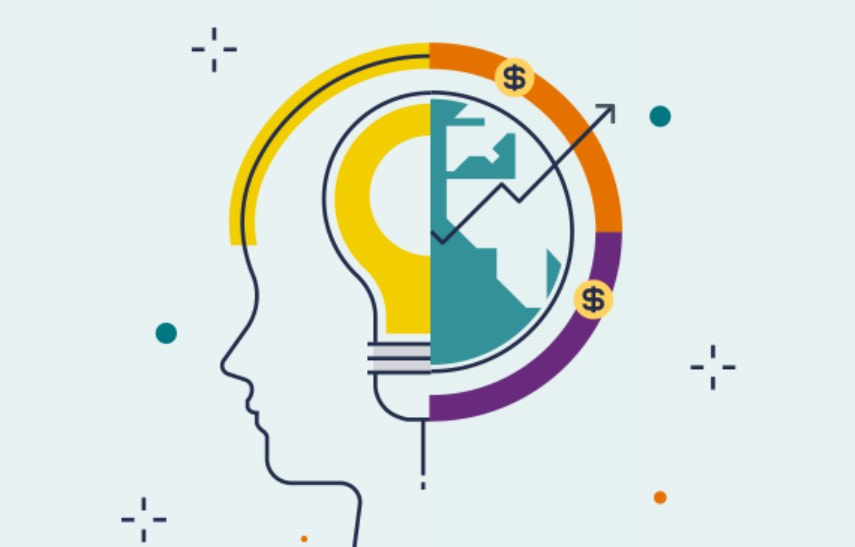
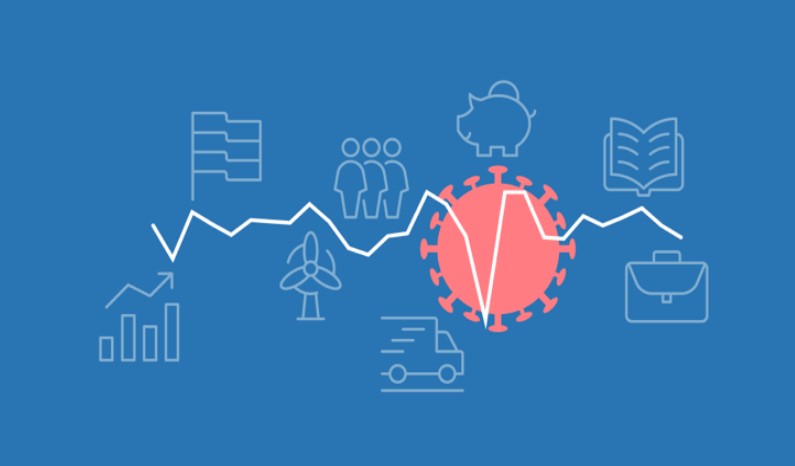
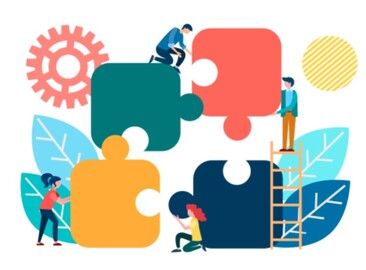
 RSS Feed
RSS Feed



